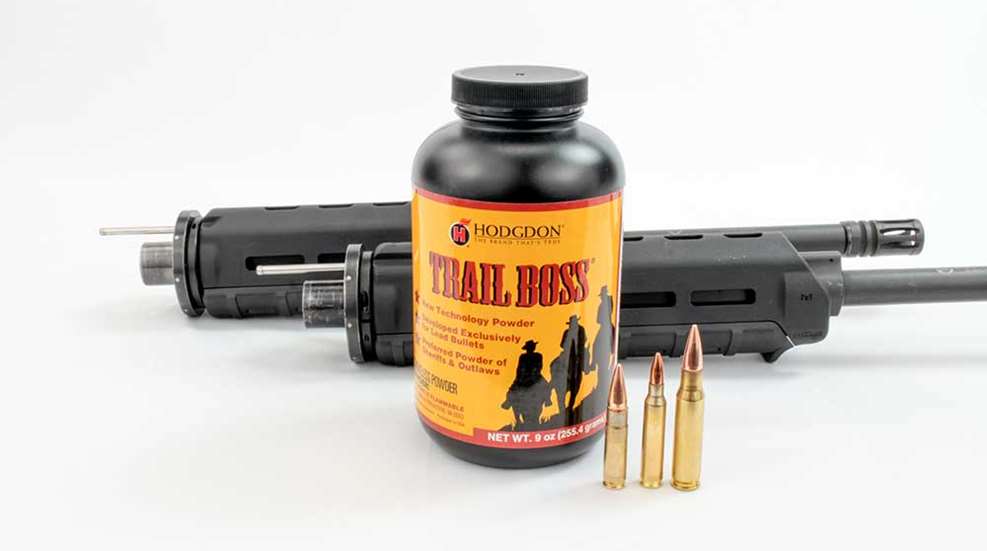
Hodgdon Trail Boss is known for its popularity throughout the Single Action Shooting Society. It reigns supreme in classic, low-velocity cartridges, such as the .45 Colt and the .45-70 Gov’t., largely because of its ability to fill the space inside these large cases without creating dangerous pressure levels. Trail Boss accomplishes this through its unique “donut” shaped kernels, maximizing its volume. This design feature is so effective that Hodgdon can only cram about nine ounces into the same bottle that would normally hold a pound of the company's other powders.
This ability to completely fill cases is extremely desirable, because it helps control ignition by ensuring the same amount of powder is down by the primer each and every time. Most cowboy-action cartridges originate from the black powder days, when gunpowder was far less potent than today’s smokeless variety. This required the use of much more of the old material. Fast-forward 100 years, and those same cartridges are in existence, except now to be loaded (and reloaded) with modern smokeless powder. This leaves a tremendous gap between the base of the bullet and the powder column, making each ignition very different from round to round and also allowing for the dangerous possibility of a double charge.
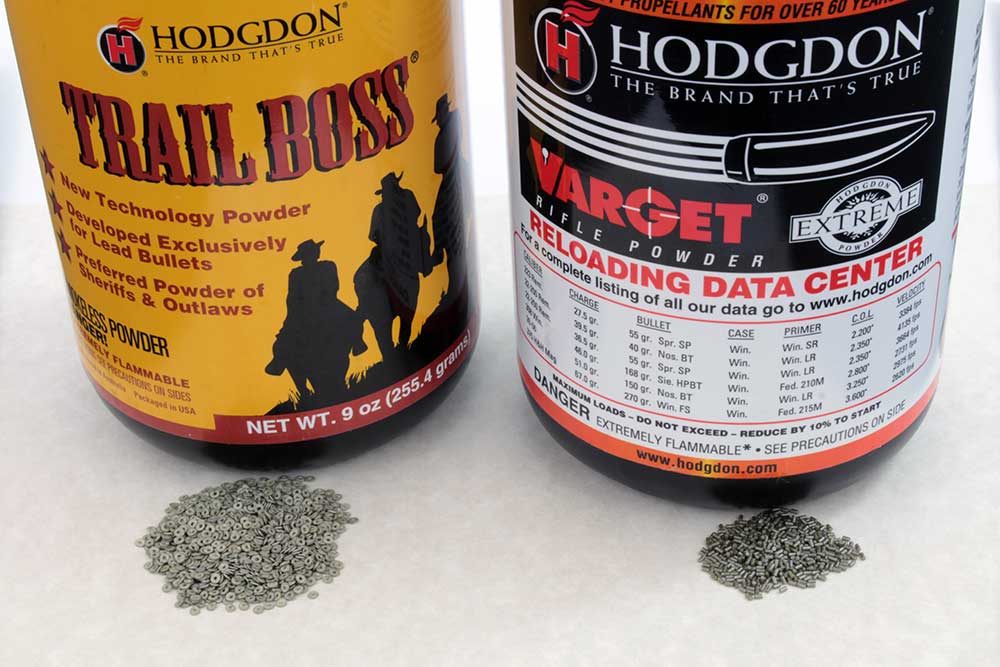
About a year ago, I wound up with a surplus of Hodgdon Trail Boss, because I just couldn’t squeeze it into an article about reloading .44 Rem Mag. While it does have some application in that cartridge, it is only with a few select bullets that I just couldn’t get my hands on. Disappointed that I didn’t have an opportunity to work with this very different powder, I let the hamster spin the wheel a little bit. As idea after idea churned in my head, I thought, “Frank you really need to lose a few pounds, maybe cut down your coffee intake, and hey, how about trying that Trail Boss in some rifle applications?"
It turns out not only are there published loads for some of the most popular modern cartridges, but there’s also a system to “build” your own loading data with nearly any rifle cartridge-and-bullet combo that you can dream up (linked below). Yes, you read that correctly. Hodgdon has given the shooting community the “green light” to tinker. The company refers to this as the 70-percent rule.
Essentially, you take your potential cartridge and figure out how deeply your bullet will be seated. Next you fill the case with powder up to the approximate level to where it will touch the base of your bullet. Now you dump the powder from the case into a pan and weight it. That's your maximum load. Take that number and figure out what 70 percent of it is. That is your starting load.
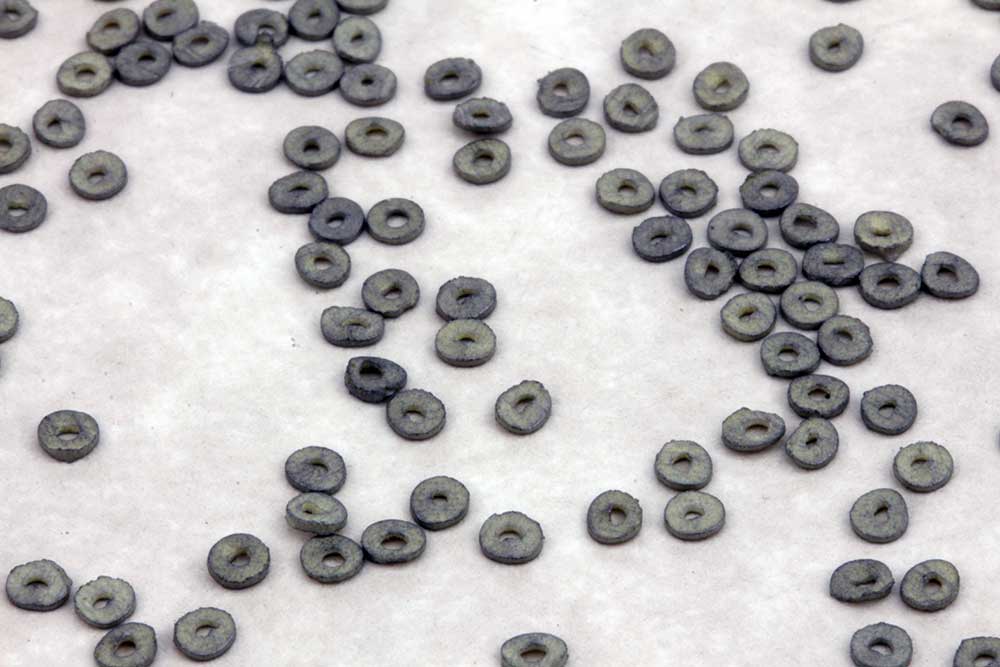
This was uncharted territory even for me, so I decided to start with some listed data. Using the Hodgdon website, I threw together some loads with .300 BLK and .223 Rem. to test the waters. I selected Hornady 55-grain FMJ bullets for my .223 Rem. loads and 150-grain FMJ Hornady bullets for the .300 BLK loads. My goal here was to harness the subsonic qualities of these powders and hopefully find one that will cycle an AR-15.
As I put together the loads, I found some very interesting qualities. It was the only time in my career where I used the “fast” setting on my Hornady Auto Charge. The “fluffiness” of the powder was impressive, as I was only able to fit about three grains of it in my Lake City 5.56 NATO cases. Even the .300 BLK hit its peak at just less than six grains, making for some very light work indeed on the loading bench.
For my first range day, I brought out our Frontier Tactical WarLock Rifle, as it has a “switch-barrel” feature to swap from .223 Rem. to .300 BLK in a matter of seconds without having to change uppers and optics; this test was right up its alley. Firing off of a Caldwell Rock BR Competition Rest, we shot groups of each increment over a Shooting Chrony Chronograph. Neither cartridge broke the sound barrier or cycled the AR-15.
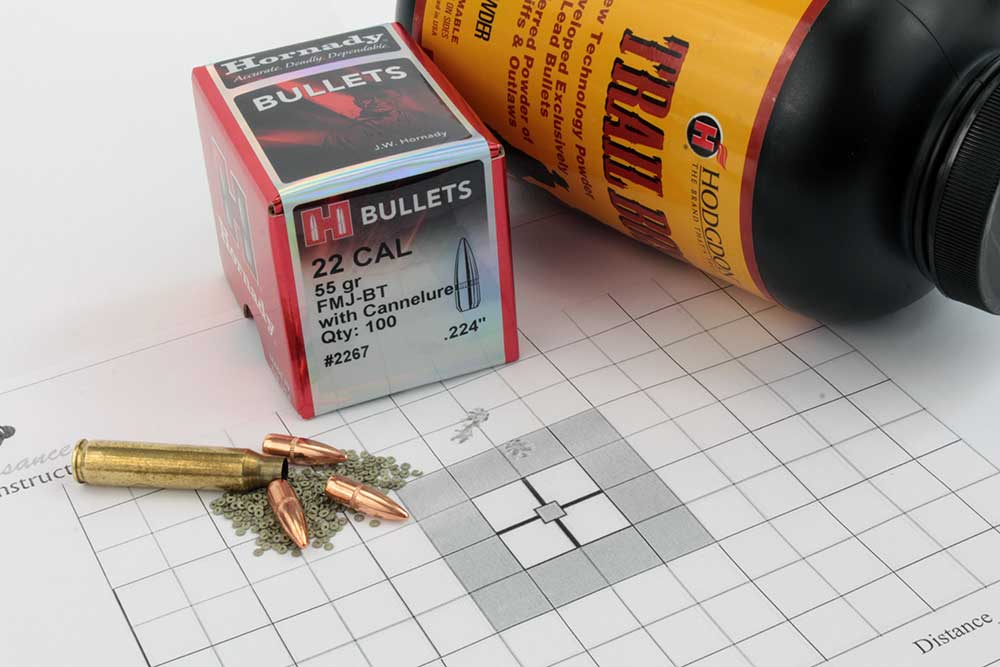
If we had even the faintest signs of cycling, then I would have experimented with springs, buffers and maybe even suppressors, but the bolt wasn't even budging. While it didn’t cycle the semi-auto, it did burn very cleanly, and we even saw a three-shot, sub-MOA group out of the .223 Rem. It’s worth noting that each cold-bore shot was substantially lower than the rest of the group across the entire spectrum with both cartridges.
After returning back to the office, I wasn’t entirely discouraged, so I decided to give it a go in a bolt-action rifle. I always turn to a .308 Win. rifle when I’m fishing for good results. There's some kind of magic with this round that allows any safe combination of powders and bullets to yield sub-MOA results somewhere in the charge spectrum. At Renaissance Firearms Instruction, we recommend this cartridge over any other as a jumping-off point for a new reloader for this very reason.
For this project, I used some Federal large-rifle primers, as I have found them to be consistent in all of my applications. I also worked with the most sentimental brass that I own: Lot No. 10FLP-308-X1…my very first handloads. As Hodgdon didn’t list data for the Hornady 178-grain ELD-X bullet, I resorted to the 70-percent rule and determined 10 grains to be my starting charge and 13.4 grains to be my max load. Filling this case really was eye-opening, as it only took about a third of the powder to fill the when compared to the Varget that I usually use.
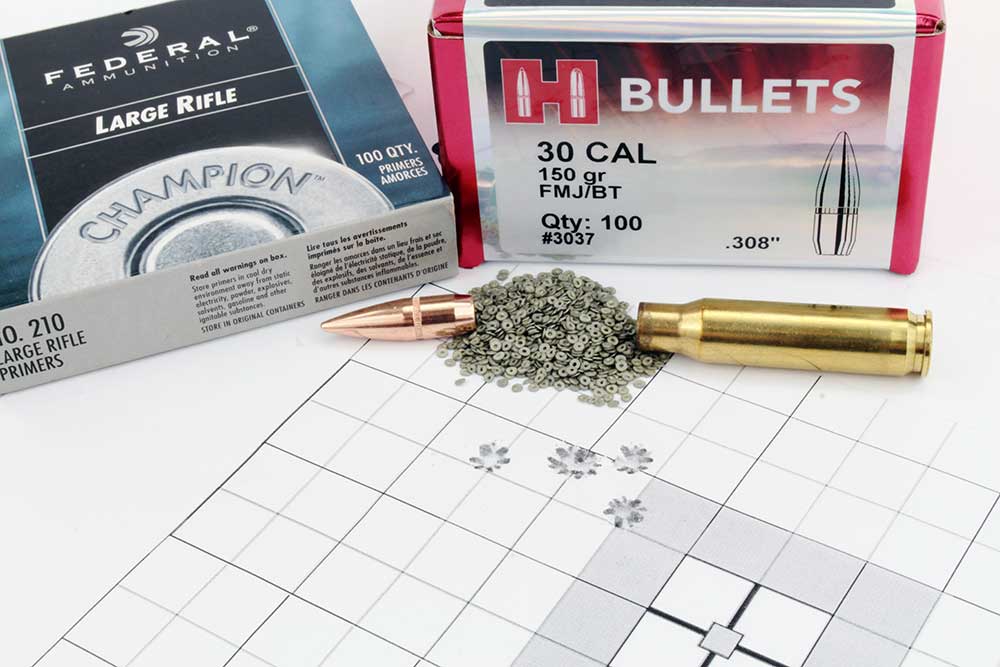
I replicated the same test parameters for range day number two and got right to work. We measured a velocity of 995 feet per second at our lowest powder charge and 1335 feet per second at our max. As velocities started below the speed of sound, it was interesting to see accuracy start to deteriorate as the loads entered the transonic range and then later clean up as the bullets started to reach our target at supersonic speeds. Honestly, it was like shooting a very large, heavy .22 LR. We saw our tightest groups at 10 grains of powder and 12.8 grains. These 100-yard groups measured 1.18 inches and 1.03 inches, respectively.
Walking off the range, I was glad that I got to spend some time with this powder, especially after seeing it on shelves and in reloading manuals for so many years. As a result of this testing, I have determined that this powder is very useful for someone looking to fire-form their brass while minimizing barrel wear. It also would be great to make reduced-recoil loads to introduce new shooters to centerfire rifles. Another use would be for low-velocity rounds, as they are going to be safer on steel than standard ammunition. But I guess the cowboys already figured one out.
For Instructions on the above referenced 70-percent rule, click here.





































